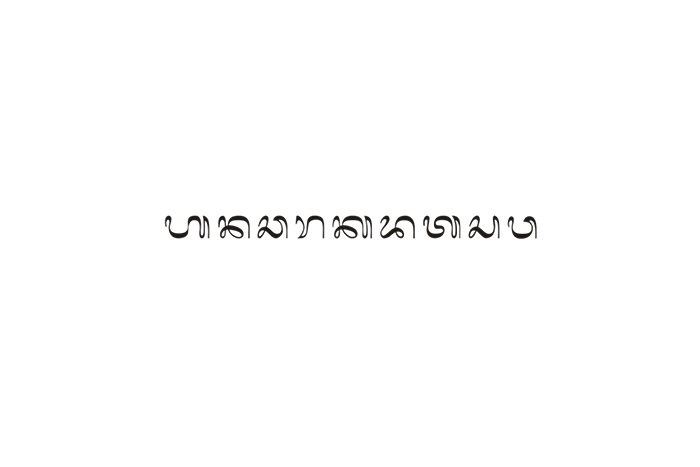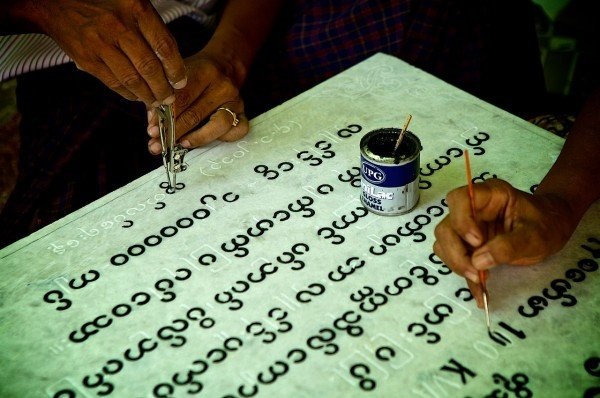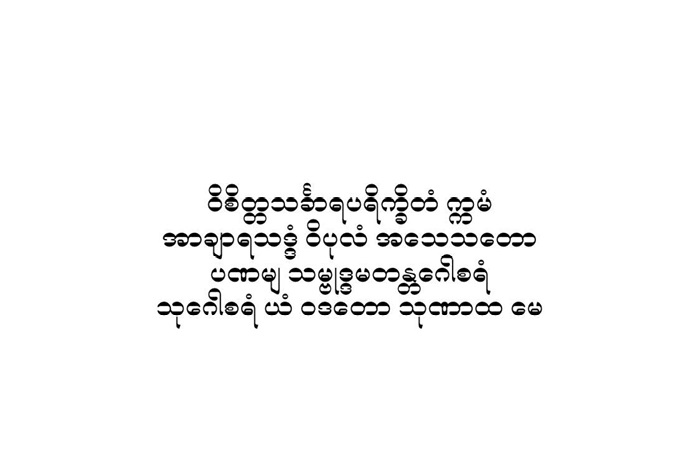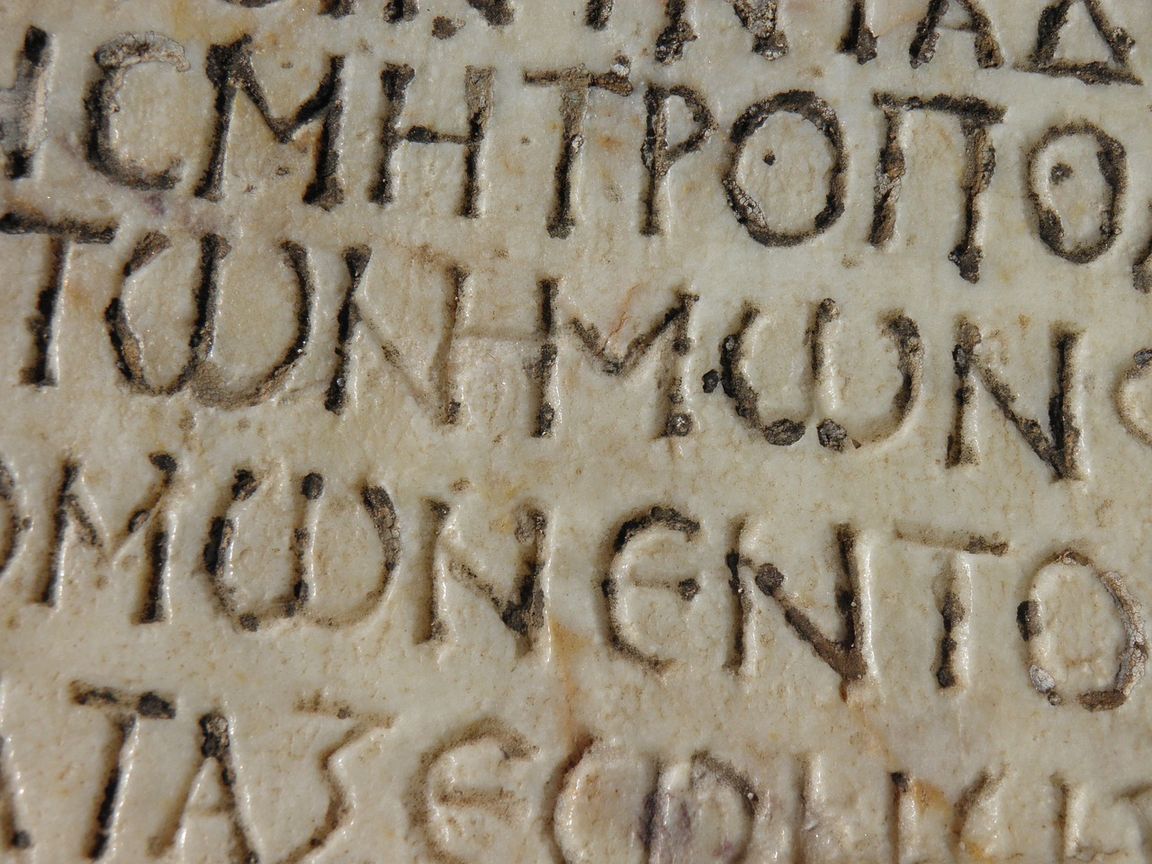Many people admire the beauty and elegance of the Arabic alphabet, which is sometimes called “Arabic script”. The Persian alphabet, which is based on Arabic, is no less beautiful (the difference between them is several letters and the order of their arrangement).
Many consider the hieroglyphic writing of China and Japan to be beautiful. In these countries, for a long time, the art of calligraphy was equated with painting - in order to beautifully paint this or that hieroglyph with a brush on silk paper, a lot of patience and skill is required.
Nowadays, the most common alphabet is the Latin alphabet. On its basis, the alphabets of many languages were created that previously did not have their own written language. But there are still languages that have their own ancient alphabets, which not only are not similar to the Latin alphabet, Arabic script or hieroglyphs familiar to many, but are also quite commonly used.
Photo: sea-inside.net
Armenian and Georgian alphabets. They were created around the same time, when there was a massive need to translate the Bible into the languages of peoples who had recently adopted Christianity. It is possible that both alphabets were invented by the same people, since when compared, the similarity between many letters is striking; in addition, both the Armenian and Georgian alphabets have 38 letters.

Photo: theoryandpractice.ru
Balinese alphabet. Originally from the island of Bali in Indonesia. Contains 47 characters. This alphabet is somewhat similar to the writing of many other alphabets of Southeast Asia, but at the same time it is very complex and beautiful. The curved letters with their outlines resemble various animals - camels, swans, snakes. Nowadays it is mainly used to write Balinese, Old Javanese and Sanskrit or in religious texts.

Photo: thegirl.ru
Burmese letter. It arose about 10 centuries ago. Like Balinese, its origin comes from Brahmi, one of the oldest varieties of Indian writing. The Burmese alphabet has 45 beautifully rounded characters. The letters of this alphabet are always drawn clockwise. The rounded shape of the characters is due to practical considerations - in the old days, texts in Burmese were written on palm leaves, which were easily torn by straight cuts.

Photo: theoryandpractice.ru
In Sri Lanka, another “descendant” of Brahmi is used - the Sinhala alphabet. It is used to record information in the Sinhala language spoken in Sri Lanka, as well as in Sanskrit in religious texts, and sometimes even in English. Texts in Sinhala look like beads - neat rounded letters seem to be strung on invisible threads.

Photo: ru.wikipedia.org
Old Mongolian letter. Unlike the previous ones, words in it are written vertically - from top to bottom. It is rightfully considered one of the most beautiful vertical alphabets. In Mongolia itself, this type of writing is used mainly in state symbols; the Cyrillic alphabet is more common in the country, to which Mongolia switched in the mid XX century. But in China, in the Inner Mongolia region, the Old Mongolian letter is used quite widely. Despite its apparent complexity, the Old Mongolian script is quite minimalistic, the letters of the alphabet consist of a small number of elements. Visually, the Mongolian alphabet looks very unusual; it seems to merge into a single canvas, because all the letters are connected to each other by thin lines.
.jpg)
Photo: theoryandpractice.ru
Hebrew alphabet. Since Arabic and Hebrew are related languages, the origin of both alphabets has common roots - ancient Aramaic writing. Texts in Hebrew are even written the same way as in Arabic - from right to left, and the first letter in both alphabets is called the same - “alef”. However, in the process of evolution, the letters of the Hebrew alphabet acquired straighter, square shapes, so in appearance there is little resemblance to Arabic. It has only four vowel letters, the remaining vowel sounds are indicated by dots above or below the signs. The Hebrew alphabet is used to write texts in Hebrew and the second Jewish language, Yiddish.
.jpg)
Photo: qwizz.ru
The Tuareg Tifinagh alphabet is interesting because it is used only by women of the Tuareg tribe - a people living in North Africa, Tunisia, Algeria, Morocco, Libya and Mauritania. This alphabet is very ancient in origin, as evidenced by the way words are written - from bottom to top and from right to left.
Tuareg men do not use it, preferring the Latin or Arabic script, but Tuareg women widely use tifinagh for business or personal records. There are no literary works written by Tifinagh; initially this alphabet was created by nomads only for domestic needs.
Externally, tifinagh does not resemble any other alphabet in the world; it is more reminiscent of encryption or geometric patterns.

Photo: Pixabay/lemaildeclaire
The Greek alphabet is known for the fact that on its basis the Latin and Cyrillic alphabet arose, but it itself remained apart from the European alphabets. Outwardly, the Greek alphabet is still more reminiscent of the Cyrillic alphabet, although it contains symbols that are not similar to either Latin or Slavic. Since antiquity, the Greek alphabet has changed little, although the Greek language itself is, of course, very different from ancient Greek.

Photo: thegirl.ru
One of the youngest alphabets, invented in the XIX century, is the Cherokee alphabet. Its author is the leader of the Cherokee Indian tribe, nicknamed Sequoia. He was illiterate, did not even know English, but decided to create his own written language for his people, seeing how English colonists easily exchanged written messages. Sequoyah took the Latin alphabet as a basis, but since he did not know the letters themselves, he interpreted and modified them in his own way. Therefore, the sound and name of the letters of the Cherokee alphabet are completely different from the Latin.
The Cherokee alphabet has 86 characters, more than the Latin alphabet. Perhaps Sequoia also used the Cyrillic alphabet or came up with some of the symbols himself. Outwardly, its alphabet is slightly reminiscent of the Latin alphabet, but some letters are unlike any other language. Cherokee speakers in Oklahoma and North Carolina widely use their own alphabet along with English.
Resources: theoryandpractice.ru; /ru.wikipedia.org; thegirl.ru; qwizz.ru
Also read:



.JPG)